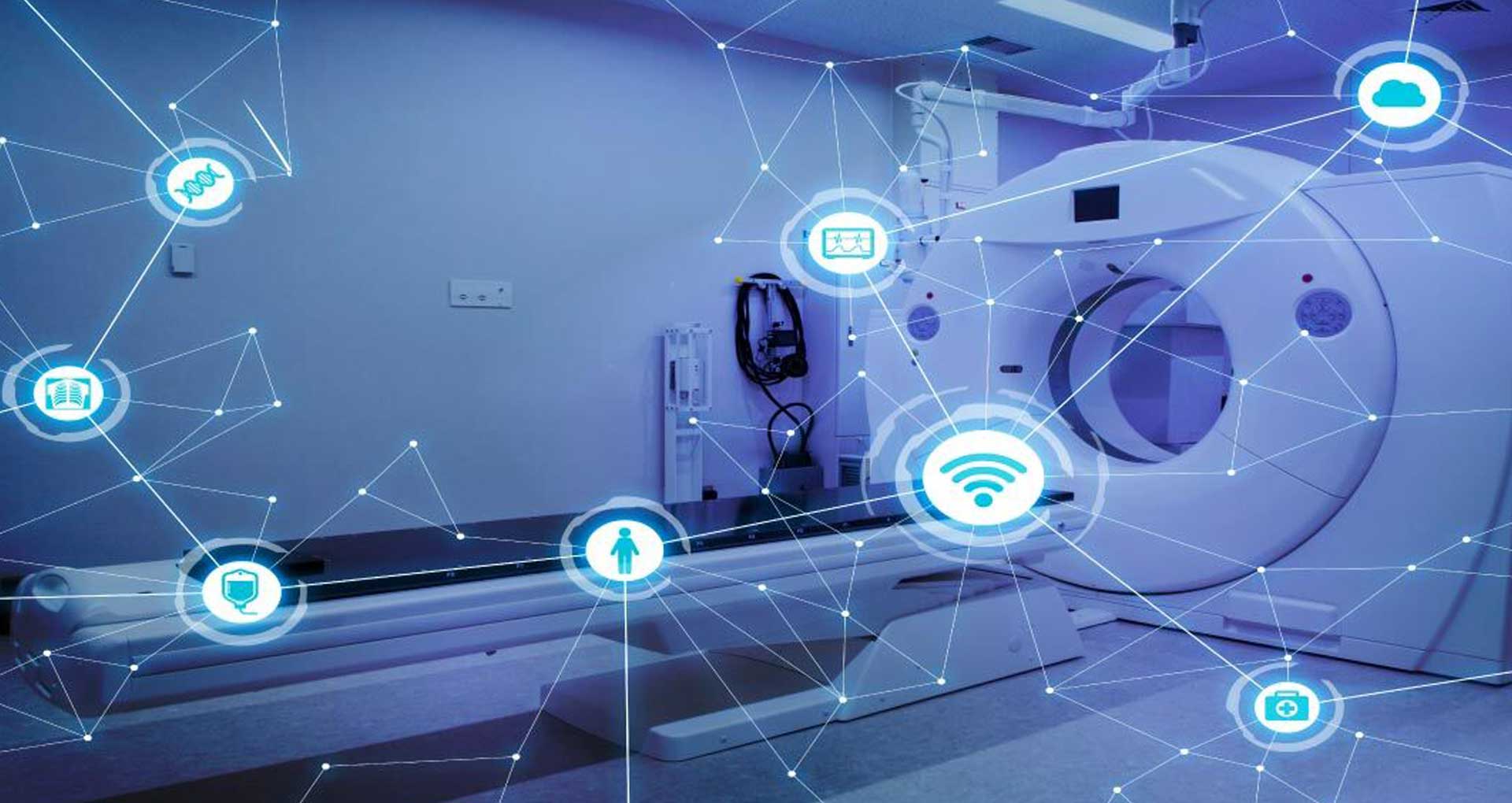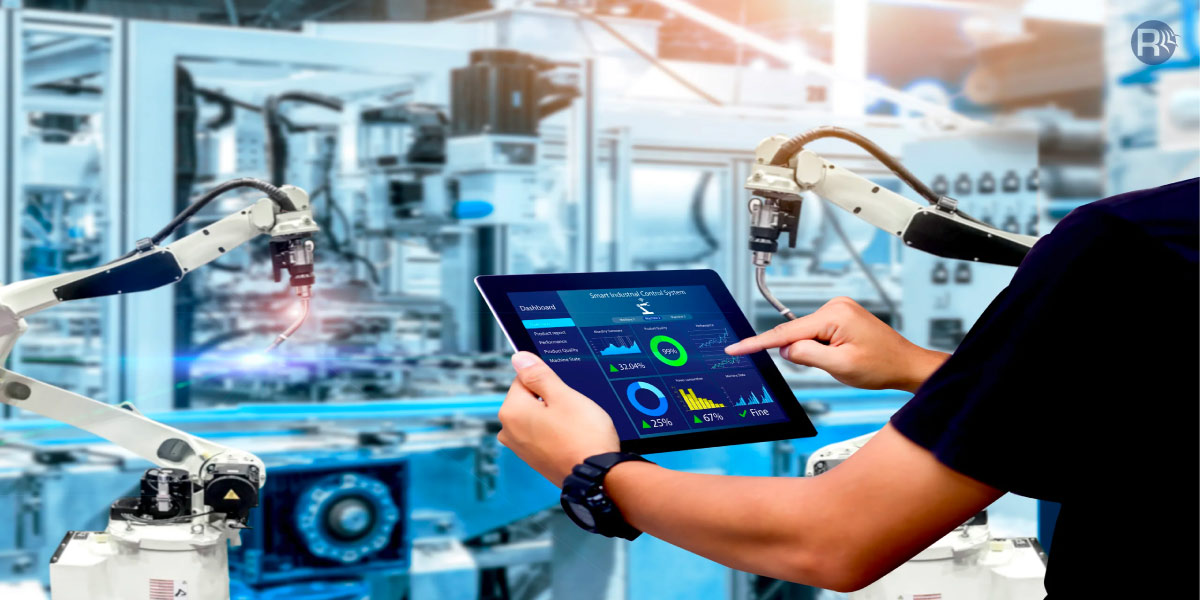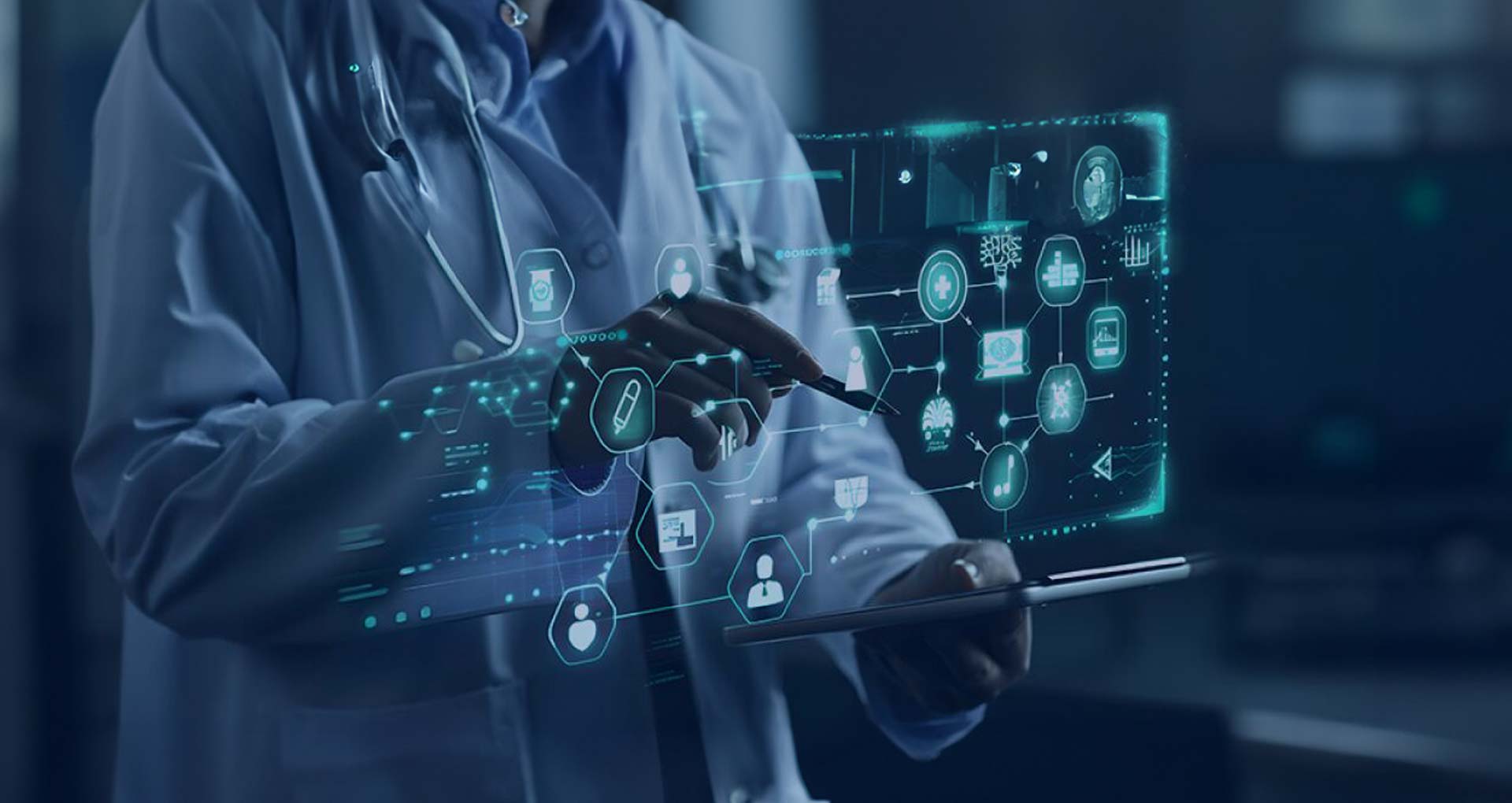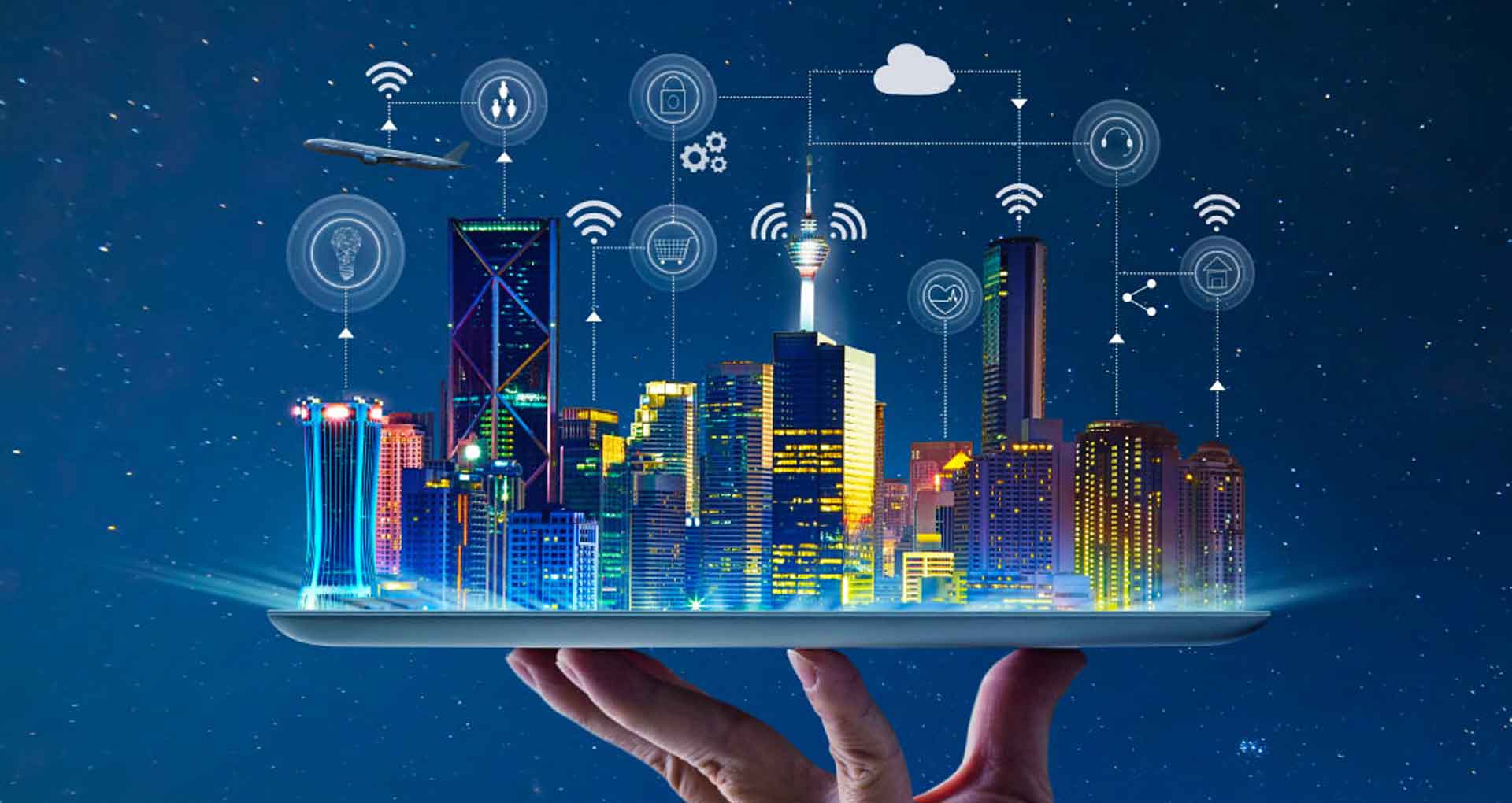The Internet of Medical Things (IoMT) is revolutionizing the healthcare industry by connecting medical devices, applications, and systems to enable a seamless healthcare technology network. Today, with the various connected devices and the advancement of technologies such as sensors, wearables, and cloud computing, IoMT is changing the mode of healthcare delivery. And this is while improving patient outcomes and enhancing operational efficiency.
In this blog, let’s dig deeper into the concept of IoMT, explore its various benefits, and weigh the potential challenges & considerations for implementing this transformative technology in typical healthcare settings.
What is IoMT?
The Internet of Medical Things (IoMT) refers to the network of interconnected medical devices, sensors, software applications, and systems that collect, transmit, and analyze medical data. IoMT leverages the power of internet connectivity and data exchange to revolutionize healthcare delivery, improve patient care, and enhance operational efficiency in the healthcare industry.
IoMT encompasses a wide range of connected devices, including wearable fitness trackers, remote patient monitoring devices, smart medical implants, hospital equipment with embedded sensors, and healthcare applications on mobile devices. These devices collect real-time health data, such as vital signs, patient activity, medication adherence, etc. For instance, a remote patient monitoring system (RPM) communicates the essential signals of a chronically ill patient to the healthcare provider in real time. It helps in early diagnosis and prompt treatment, thereby saving the patient’s life.
Further, the collected data is securely transmitted to healthcare providers, caregivers, or cloud-based platforms for analysis and interpretation. And by leveraging advanced analytics & machine learning algorithms, healthcare professionals can gain valuable insights from the data, enabling early detection of health issues, personalized treatment plans, remote patient monitoring, and improved decision-making.
The potential applications of IoMT are vast. It includes remote patient monitoring, telehealth consultations, chronic disease management, medication management, preventive care, and intelligent healthcare infrastructure optimization. Other IoMT examples include infusion pumps administering medications, biosensors located in wearables, biosensors implanted in the human body for monitoring vitals, sensors that track medication orders & medical imaging systems. It promises to transform healthcare by providing personalized, efficient, and accessible care while reducing costs and improving patient outcomes.
Types of IoMT Segments;
- In-home IoMT: It allows people to send their medical data from home to doctors or hospitals. Remote patient monitoring (RPM) systems measure blood pressure and oxygen levels. It helps care providers catch health issues early and avoid hospital readmissions. Telehealth allows patients to connect with doctors virtually at their convenience for minor health concerns. Personal emergency response systems (PERS) automatically detect falls or heart attacks and call for help. This keeps at-risk people, like seniors living alone, safe and provides immediate assistance. In-home IoMT is revolutionizing healthcare by empowering people to care for themselves and healthcare providers to give remote, continuous, and personalized support.
- On-body IoMT: On-body IoMT involves wearable medical devices connected to remote tracking systems for use outside the home. Consumer on-body IoMT devices track health metrics, providing early indicators of severe conditions. For example, the Apple Watch detects irregular heart rhythms. Clinical on-body IoMT devices have a more comprehensive range of sensors. Diabetic patients can wear glucose sensors to monitor levels and share data with doctors for prompt treatment. This IoMT market segment includes consumer wearables (fitness devices) and medical-grade wearables. Companies like Samsung, Misfit, and Fitbit are active in this field.
- Community IoMT: It involves deploying IoMT devices across a wider town or geographic area. Mobility services track patients during transportation in a vehicle, while emergency response intelligence systems assist paramedics and first responders in monitoring patient metrics beyond the hospital environment. Community IoMT also includes technologies that enable remote services. Point-of-care devices can be utilized in unconventional medical settings like field hospitals, and kiosks can dispense medicines to individuals in areas with limited or no access to traditional infrastructure.
- In-hospital and In-clinic IoMT: IoMT devices are used in telehealth and traditional clinic settings for clinical or administrative purposes. They allow healthcare professionals to remotely access and interact with patients. Hospitals must manage the supply and quality of medical assets and track how personnel and patients move within their premises. IoMT sensors and tracking systems help healthcare professionals monitor these interactions, providing administrators with a comprehensive understanding of the situation. So, other functionalities under this segment include patient flow management, assets management, inventory management, and environment/energy monitoring.
Impact of the Internet of Medical Things (IoMT) on the Healthcare Industry
IoMT revolutionizes healthcare by leveraging interconnected medical devices to make data-driven decisions and improve patient care. Real-time patient monitoring and medication reminders are vital features, enhancing the overall healthcare experience. Smart medical devices like watches and pillboxes track health conditions and provide accurate diagnoses, empowering patients to manage their health.
IoMT Market Size and Share
Did you know[1]:
- The global IoMT market is forecasted to grow to USD 270.40 billion by 2029 at a CAGR of 23.9%
- Hospitals and clinics use most IoMT devices, with over 70% of the organization using them to collect and keep track of patient data
The growth drivers for the global IoMT market include the rising demand for wearable devices and connected devices in the healthcare industry. This market has several growth opportunities due to the technology’s benefits, like enhanced drug management, lower medical costs, real-time monitoring & improved patient outcomes.
IoMT boosts efficiency in healthcare by improving access control and providing valuable operational insights. It enables global assistance by collecting and sharing health data, allowing doctors to provide remote medical advice and support, regardless of the patient’s location. This results in improved healthcare services, reduced costs, and a patient-centric approach that empowers individuals to participate in their well-being actively.
Here are some key impacts of IoMT on the healthcare industry:
- Improved Patient Care: While enabling remote patient monitoring, it allows healthcare providers to collect real-time health data & track patients’ conditions outside traditional healthcare settings. This leads to more proactive and personalized care with early detection of health issues & timely interventions, as needed – ultimately improving patient outcomes.
- Enhanced Efficiency and Workflow: Helps streamline healthcare operations by automating routine tasks, monitoring inventory levels, optimizing resource allocation, and reducing manual paperwork. This results in increased efficiency, reduced administrative burden, and improved overall workflow for healthcare organizations.
- Preventive & Personalized Medicine: Facilitates the collection of comprehensive patient data, including vital signs, activity levels, sleep patterns, and medication adherence. This input enables healthcare providers to implement personalized treatment plans & deliver preventive care.
- Remote and Telehealth Services: To offer healthcare in remote or underserved areas, IoMT enables remote consultations, telemedicine, and virtual healthcare services, facilitating access to healthcare. Patients can expect to receive expert medical advice, follow-up consultations, and even receive treatment from the comfort of their homes. It would thus help improve healthcare accessibility & reduce barriers to care.
Further, read how the Internet of Healthcare Things (IoHT) Works.
Benefits of IoMT in Healthcare
IoMT offers many benefits that enhance healthcare outcomes, streamline processes, and empower healthcare providers and patients. In this section, we will explore the remarkable benefits of IoMT for the healthcare landscape. Right from improved patient monitoring & personalized treatment plans to enhanced operational efficiency & cost savings. Let’s discuss some of the many advantages of IoMT in healthcare.

- Remote Patient Monitoring: IoMT enables the monitoring of vital signs, symptoms, and health conditions in a remote mode. This allows healthcare providers to track patients’ health status outside traditional healthcare settings. And this leads to early detection of issues, timely interventions, and reduced hospital readmissions. Read this blog to explore the specifics for a remote patient monitoring solution.
- Improved Patient Outcomes: IoMT facilitates personalized and proactive care by continuously monitoring patients. Healthcare providers can identify patterns, trends, and anomalies in patient data. And this enables early intervention, customized treatment plans, and improved patient outcomes.
- Enhanced Efficiency and Workflow: IoMT automates routine tasks, optimizes resource allocation, and reduces manual paperwork. It leads to improved operational efficiency & streamlined workflow across the healthcare organization. Thus it allows healthcare professionals to focus more on patient care and critical tasks.
- Cost Savings: IoMT helps reduce healthcare costs through various means, including remote patient monitoring & telehealth services. From helping prevent hospital readmissions & unnecessary medical procedures to reducing healthcare expenses associated with travel & hospital visits (in remote or underserved areas).
- Preventive Care and Chronic Disease Management: IoMT facilitates preventive care by continuously monitoring patients’ health metrics and providing personalized insights. It would allow healthcare providers to identify & address risk factors early on. Thus preventing the onset or progression of chronic conditions. Further, IoMT also enables remote monitoring & management of chronic diseases while reducing hospital visits & improving the quality of life for patients.
- Data-Driven Insights: The vast amount of generated healthcare data can be analyzed using advanced analytics & machine learning algorithms. These insights support identifying trends, patterns, and correlations. And thus enabling better disease management, public health interventions, and research initiatives.
- Telehealth and Remote Consultations: IoMT enables telehealth services and remote consultations while expanding access to healthcare for patients in remote or underserved areas. Further, patients can receive medical advice, consultations, and even treatment from the comfort of their homes. And this would help reduce barriers to care and improve healthcare accessibility. Read this blog to uncover the essentials of telemedicine application development.
- Enhanced Patient Engagement: By providing access to health data from self-monitoring tools and personalized health recommendations, patients can actively participate in improving their healthcare. It would foster a sense of engagement & responsibility for their well-being.
- Proactive Maintenance and Equipment Monitoring: IoMT helps ensure optimal functionality and performance by continuously monitoring medical equipment and devices. And this allows offering proactive maintenance to help prevent equipment failures, improves patient safety, and reduces downtime.
Learn how our indoor navigation mobile web app development helped healthcare facilities track their assets quickly and efficiently.
Challenges of IoMT Integration in Healthcare
While it would be the same scenario with the adoption and integration of any other technology, there are challenges in the widespread implementation of the Internet of Medical Things. Partnering with an experienced company for IoT development can help you overcome these limitations and ensure your project’s success.
Here are some of the IoMT challenges:
- Data Security and Privacy: IoMT interconnects sensitive medical data vulnerable to unauthorized access and illicit activities. Its apps and devices handle personal and financial information, making them attractive targets for hackers. Many IoT solutions lack the computing power to implement robust security measures, further amplifying the risk. Sharing IoMT data across multiple systems exposes it to many security threats as it flows through the public internet. To mitigate these risks, your IoMT development team must adhere to best practices in security and prioritize strong security measures. It would help you implement encryption protocols and secure access controls.
- Data Interoperability: Making IoMT devices work together smoothly can be pretty tricky. Sometimes, these devices face problems when sharing and storing patient data, causing errors and delays. Another issue is that different parts of the healthcare system work separately, like they’re in their little worlds. And when new IoMT systems join the mix, they might not get along well with the existing ones, causing even more trouble. Ensuring seamless communication and data exchange between devices is crucial, allowing for meaningful insights and effective collaboration among healthcare providers and payers.
- Device Mobility: While stationary IoMT devices have limited performance capabilities, it is challenging to integrate even mobile devices due to the limited network capabilities of medical facilities. The hospital wifi may not be secure enough to handle a complete IoMT system. Also, mobile devices may face physical barriers during movements interrupting their wireless signal.
- Licensing and Regulations: It’s essential for medical IoT devices to follow the rules and get the necessary licenses. However, many businesses don’t take enough steps in this area, which can cause problems and higher legal costs later on. Especially when it comes to HIPAA regulations, new technologies need to comply. Clinical-grade medical devices also require national regulators’ approval before being sold. IoMT devices bring new challenges for regulators and lawmakers as they work to keep up with the changing world of healthcare technology.
- Data Governance and Analytics: You would agree that managing and deriving meaningful insights from the massive amounts of IoMT-generated data could pose a challenge. Therefore establishing clear data governance policies and data management strategies and implementing advanced analytics tools helps healthcare organizations to analyze & interpret the data for actionable insights effectively.
- User Adoption and Training: Successful integration of IoMT requires healthcare professionals to adapt to new technologies & workflows seamlessly. Detailed comprehensive training programs enable end-users to learn the benefits of IoMT to improve patient care & workflow efficiency while fostering user adoption & acceptance.
- Ethical Considerations: For healthcare organizations, using IoMT would raise ethical considerations. It would include consent management, data ownership, and patient autonomy. Therefore, it is crucial to ensure transparent communication with patients and respect their privacy preferences while establishing ethical data usage and sharing guidelines.
- Reliability and Availability: An essential consideration for healthcare organizations while implementing IoMT devices would be ensuring continuous service availability. It would include implementing redundancy measures, continuous device monitoring, and regular maintenance to ensure the reliability and availability of IoMT systems.
How Can Rishabh Software Help Develop IoMT Applications?
As IoMT technology continues to revolutionize the healthcare industry by connecting devices and applications, it opens a world of immense business opportunities. At Rishabh Software, we have a team of experienced IoT consultants and software developers who can design and develop custom IoMT solutions tailored to the unique requirements of healthcare organizations. So, whether it’s developing remote patient monitoring systems, telehealth platforms, or data analytics solutions, we can help create scalable and secure applications to meet specific needs.
Explore our IoT development services to learn about our technical know-how and experience to develop, upgrade, modernize, or integrate IoT solutions. Our highly skilled developers and designers provide technical consultation and can guide you throughout your IoMT project with accurate planning and estimation.
Frequently Asked Questions
What is the difference between IoT and IoMT?
The IoT (the Internet of Things) technology is a network of different devices that connect and share data through the Internet. It includes smart gadgets like light switches, watches, refrigerators, and more, which can process information and interact independently.
In contrast, the Internet of Medical Things (IoMT) focuses on connected healthcare devices. These devices are explicitly designed for accuracy, reliability, and security. In hospitals, where doctors and nurses are constantly on the go, IoMT devices and sensors provide essential patient information from anywhere in the facility, freeing time for important life-saving tasks.
While IoT devices cater to a broad consumer audience and have applications in various sectors, IoMT devices are tailored for healthcare professionals and facilities. The IoMT technology impacts the healthcare industry by delivering reliable data and allowing medical staff to prioritize critical responsibilities.
How to secure and manage IoMT devices?
The best practices for securing and managing IoMT devices include the following:
- Implementing robust authentication and access controls while limiting device access to authorized personnel only.
- Regularly updating and patching devices to address any vulnerabilities.
- Encrypting data in transit and at rest to protect it over networks and on servers or devices.
- Establishing network segmentation for IoMT devices to minimize the impact of potential breaches and contain any possible threats.
- Conducting regular risk assessments to evaluate the security posture of IoMT devices and networks.
- Training your staff on security protocols and best practices.
- Monitoring and analyzing device activity to detect unauthorized access attempts, enable proactive response, and mitigate risks.
- Maintaining robust physical security of IoMT devices by limiting their access, securing them in locked cabinets, and conducting regular audits of their locations.
- Adherence to regulatory compliance to protect patient privacy and data security.
What does IoMT technology comprise?
It comprises a network of interconnected medical devices, sensors, software applications, and data analytics systems that collect, transmit, and analyze healthcare-related data. The said devices would range from wearable fitness trackers & remote patient monitoring devices to implantable medical devices and smart hospital equipment. And the data collected by these devices is securely transmitted and processed insights for healthcare providers, researchers, and patients. The IoMT ecosystem also includes cloud computing platforms, artificial intelligence algorithms, and machine learning models that enable real-time data analysis, predictive analytics, and the development of personalized healthcare solutions. Together, these components form the foundation of IoMT technology, facilitating data-driven decision-making, improving patient care, and transforming healthcare delivery. Further, explore the tools & technologies of IoT application development if you wish to learn more about the technology ecosystem.
What are real-life IoMT use cases?
Here are a few real-life IoMT use cases:
- Rijuven Clinics play an essential role in providing in-clinical and in-hospital IoMT applications. They help healthcare providers connect with their patients anytime[2]
- MyWay Route Planner App guides patients to their healthcare facilities by providing the shortest route [3].
- Fitbit health trackers and smartwatches can accurately monitor heart rate to steps and store health and fitness information.
Read this blog to learn more about the IoT use cases in the healthcare industry.
Footnotes:
1. https://www.databridgemarketresearch.com/reports/global-internet-of-medical-things-iomt-market
2. https://www.rijuven.com/cardiosleeve-1
3. https://mywayroute.com/industries/home-healthcare-route-planner










 30 Min
30 Min


